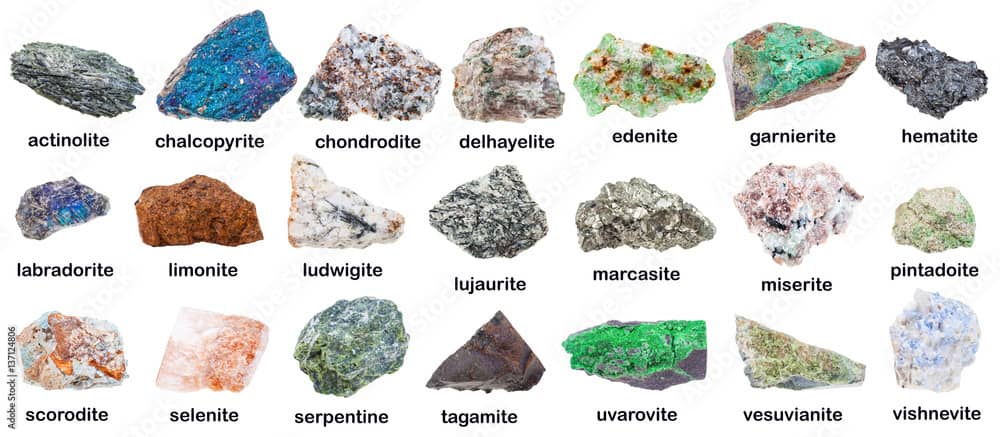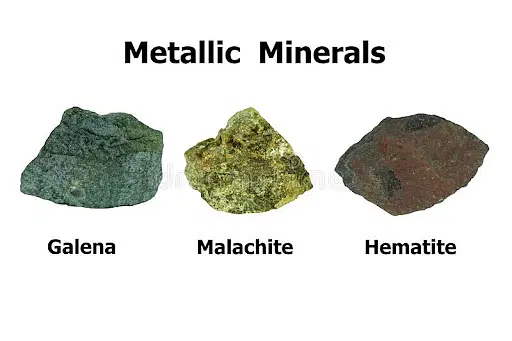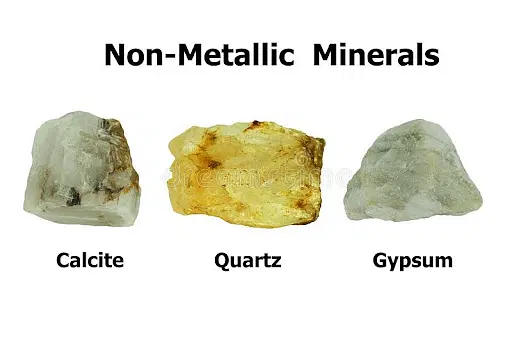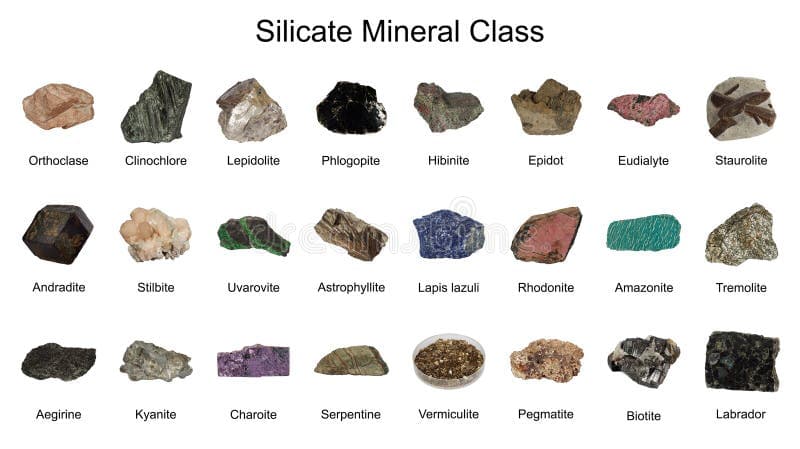
A mineral is a naturally occurring, inorganic solid substance with a specific chemical composition and a defined crystalline structure. Unlike rocks, which can be aggregates of different minerals, each mineral is composed of the same material throughout. Essentially, minerals are composed of the same substance throughout and have a specific internal arrangement of atoms, rocks are usually a mix of different minerals and do not have a uniform composition or structure.
But there is a wide variety of minerals out there.
How many minerals are there?
The diversity of minerals on Earth is staggering. Currently, there are over 5,000 recognized mineral species — and there’s probably still more to uncover. This number that reflects the ongoing evolution of the Earth’s crust and the continually advancing field of mineralogy.
In fact, this count increases constantly as new minerals are discovered and as existing ones are reevaluated with advanced scientific techniques. One 2022 study suggests that the number of minerals is closer to 10,000, which can form in at least 57 different ways, including through asteroid collisions, evaporation or oxidation.
The process of identifying and classifying a new mineral is rigorous and is overseen by the International Mineralogical Association (IMA). Each mineral is defined by its unique chemical composition and crystalline structure. This complexity arises from the myriad conditions under which minerals can form – varying temperatures, pressures, and chemical environments within the Earth’s crust and mantle.
Some minerals are ubiquitous, found across the globe in various rock formations, while others are exceedingly rare, known only from singular locations or specific, unusual conditions. For example, minerals formed in the deep mantle under extreme pressure differ markedly from those formed at the Earth’s surface.
The expanding catalog of minerals also includes those influenced or created by human activities. Mining, industrial processes, and even alterations in natural water systems can lead to the formation of new minerals, contributing to the growing total.
What are the most common minerals?
While there are thousands of minerals, certain types are particularly abundant and significant in the Earth’s crust. We should make the distinction that we’re talking about individual minerals here, not types of minerals (which we’ll get to in a bit).
These common minerals form the foundation of many rocks and are crucial to various geological processes:
- Quartz (SiO2): One of the most abundant minerals in the Earth’s crust, quartz is renowned for its hardness and resistance to weathering. It is found in a variety of rock types, including igneous, metamorphic, and sedimentary rocks.
- Feldspar Group: This group, including orthoclase, plagioclase, and microcline, represents the most abundant minerals in the Earth’s crust. Feldspars are key components in igneous and metamorphic rocks and are pivotal in the formation of soil.
- calcite (CaCO3): The primary component of limestone and marble, calcite is a carbonate mineral. It plays a significant role in sedimentary processes and is a primary mineral in the formation of cave structures and stalactites/stalagmites.
- Mica Group: Including minerals like muscovite and biotite, micas are known for their sheet-like structure. They are common in igneous and metamorphic rocks and are used in various industrial applications for their insulating properties.
- Pyrite (FeS2): Often mistaken for gold due to its metallic luster and pale brass-yellow hue, pyrite is a sulfide mineral found in various geological environments. It’s not a source of iron but is important in the formation of sulfuric acid.
- Hematite (Fe2O3): A primary ore of iron, hematite is found in sedimentary rocks and is a common product of the weathering of iron-rich minerals. Its red streak is distinctive, often coloring the rocks in which it is found.
- Gypsum (CaSO4·2H2O): A sulfate mineral, gypsum is widely used in construction (plaster and drywall) and as a fertilizer. It forms in various environments, including evaporitic conditions and as an alteration product of sulfates.
- Olivine (Mg2SiO4 to Fe2SiO4): A key component of mafic igneous rocks, olivine is important in understanding the Earth’s mantle composition and processes. It weathers quickly on the Earth’s surface but is abundant in the Earth’s upper mantle.
- Halite (NaCl): Commonly known as rock salt, halite forms by the evaporation of salty waters. It is essential both as a mineral resource for sodium chloride and in geological studies of sedimentary environments.
Silicate minerals dominate the Earth’s geology
The classification of minerals into silicates and non-silicates is crucial due to the fundamental differences in their chemical composition and the roles they play in Earth’s crust.
Silicate minerals comprise more than 90% of the Earth’s crust. Their abundance is due to the widespread availability of silicon and oxygen, the two most abundant elements in the Earth’s crust. The diversity within silicate minerals is immense, ranging from simple structures like olivine to complex frameworks found in feldspars and zeolites. This diversity is a reflection of the varied conditions under which these minerals form, including different temperatures, pressures, and chemical environments.
Silicate minerals
These are characterized by the presence of silicon and oxygen, which form a basic building block known as the silicon-oxygen tetrahedron. This tetrahedron consists of four oxygen atoms surrounding a single silicon atom. The versatility of silicates arises from the ability of these tetrahedra to link together in various ways, forming different structures such as chains, sheets, or three-dimensional frameworks. This results in a wide variety of silicate minerals with diverse properties and appearances, including common minerals like quartz, feldspars, and micas. The predominance of silicates in the Earth’s crust makes them fundamental in understanding geological processes and the formation of rocks.
Non-silicate minerals
Non-silicate minerals, while less abundant, are equally important. They include groups such as oxides, sulfides, carbonates, halides, and native elements. These minerals often have significant economic value, as many ores of metals and other industrially important materials fall into this category. For example, hematite and bauxite (oxides) are major ores of iron and aluminum, respectively, and calcite (a carbonate) is a primary component of limestone. Non-silicates also play crucial roles in the Earth’s geochemical cycles and provide insights into different geological environments.
Classes of minerals: metallic vs non-metallic
Metallic Minerals

Metallic minerals exhibit a metallic luster in their raw form, resembling the appearance of metal. They are typically opaque and dense, with high electrical and thermal conductivity. These minerals are prized for their utility in various industrial and technological applications.
- Characteristics: Metallic minerals often have a shiny, reflective surface and are good conductors of heat and electricity. They can be malleable and ductile.
- Examples: Iron ore (hematite, magnetite), copper ore (chalcopyrite), gold, silver, and platinum are some common metallic minerals.
- Uses: Metallic minerals are vital in manufacturing industries, electronics, jewelry, and various other sectors. For example, iron ore is essential in steel production, while gold and silver are used in jewelry and electronics.
Non-Metallic Minerals

Non-metallic minerals do not exhibit metallic luster and are valued for their abundance, diversity, and wide range of applications. They encompass a broad spectrum of mineral types, including industrial minerals like gypsum and salt, precious stones like diamonds and rubies, and construction materials like granite and limestone.
- Characteristics: These minerals can be transparent or translucent and may display a variety of colors and lusters (e.g., pearly, vitreous, dull). They are generally poor conductors of heat and electricity.
- Examples: Quartz, feldspar, talc, mica, calcite, gypsum, halite (rock salt), and fluorite are notable non-metallic minerals.
- Uses: Non-metallic minerals are essential in construction (cement, tiles, countertops), the chemical industry, agriculture, and even cosmetics.
This classification into metallic and non-metallic minerals is based primarily on physical properties like luster, conductivity, and opacity, which often correlate with their uses in different industries.
Classes of minerals by their chemistry
| Mineral Name | Chemical Formula | Class | Color | Hardness (Mohs) | Luster | Common Uses |
|---|---|---|---|---|---|---|
| Quartz | SiO2 | Silicate | Varies (often clear or white) | 7 | Vitreous | Glass making, electronics, watches |
| Feldspar | Varies (e.g., KAlSi3O8 – NaAlSi3O8 – CaAl2Si2O8) | Silicate | Varies (white, pink, gray) | 6-6.5 | Vitreous | Ceramics, glassware, construction |
| Calcite | CaCO3 | Carbonate | White, clear, varies | 3 | Vitreous to pearly | Cement, soil treatment, acid neutralization |
| Mica | Varies (e.g., KAl2(AlSi3O10)(F,OH)2 for muscovite) | Silicate | Varies (silver, brown, green, clear) | 2-3 | Pearly | Electrical insulators, cosmetics, paints |
| Pyrite | FeS2 | Sulfide | Brass-yellow | 6-6.5 | Metallic | Sulfuric acid production, ornamental use |
| Hematite | Fe2O3 | Oxide | Reddish-brown, metallic gray | 5-6 | Metallic to dull | Iron production, pigments |
| Gypsum | CaSO4·2H2O | Sulfate | White, clear, gray | 2 | Vitreous to pearly | Plaster, drywall, fertilizer |
| Olivine | (Mg, Fe)2SiO4 | Silicate | Olive-green | 6.5-7 | Vitreous | Refractory material, gemstones |
| Halite | NaCl | Halide | Clear, white, may have color tinges | 2-2.5 | Vitreous | Seasoning, food preservation, road de-icing |
Minerals are categorized into several classes based on their dominant chemical components and structure. These classes provide a systematic way to understand and study the vast diversity of minerals found on Earth:
Silicates

The most extensive mineral class, silicates, comprises minerals containing silicon and oxygen, often with additional elements. They form the core of most igneous, metamorphic, and sedimentary rocks. This class includes diverse subgroups like feldspars, quartz, micas, pyroxenes, amphiboles, and olivines.
Oxides
Oxides are characterized by the combination of oxygen with one or more metals. This class is significant for its role in metal ores, with examples like hematite (Fe2O3) for iron, bauxite (Al(OH)3) for aluminum, and rutile (TiO2) for titanium. Oxides are known for their high density and hardness.
Sulfides
In sulfides, sulfur is bonded with metals or semimetals. These minerals are crucial for extracting many metals, with prominent examples being galena (PbS) for lead, sphalerite (ZnS) for zinc, and chalcopyrite (CuFeS2) for copper. Sulfides typically have a metallic luster and high density.
Carbonates
Carbonates are minerals containing carbonate groups (CO3) combined with metal ions. Common examples include calcite (CaCO3) in limestone and marble, and dolomite (CaMg(CO3)2) in dolostone. They often originate from biological processes and play a vital role in the carbon cycle.
Halides
This class consists of minerals with a halogen element (fluorine, chlorine, bromine, or iodine) as a major anion. Notable members include halite (NaCl) and fluorite (CaF2), which often form in evaporative sedimentary environments and are characterized by their softness and vibrant colors.
Sulfates
Sulfates are defined by the presence of sulfate groups (SO4) with metal ions. Gypsum (CaSO4·2H2O) and anhydrite (CaSO4) are typical representatives. These minerals commonly form through evaporation in sulfate-rich waters.
Phosphates
In phosphate minerals, phosphate groups (PO4) are combined with various elements. Apatite (Ca5(PO4)3(F,Cl,OH)), crucial for bones and teeth, is a part of this class. Phosphates are important in agriculture and often occur in sedimentary rocks.
Native Elements
This unique class comprises minerals made of a single element, such as gold (Au), silver (Ag), copper (Cu), and diamond (carbon, C). Native elements can be found in diverse geological settings and are prized for their economic and industrial significance.
Conclusion
These minerals, with their unique properties and abundance, play fundamental roles in shaping the Earth’s landscape, forming rocks, and contributing to various geological cycles. They are not only of academic interest but also of immense practical importance in industries ranging from construction to technology and environmental management.


